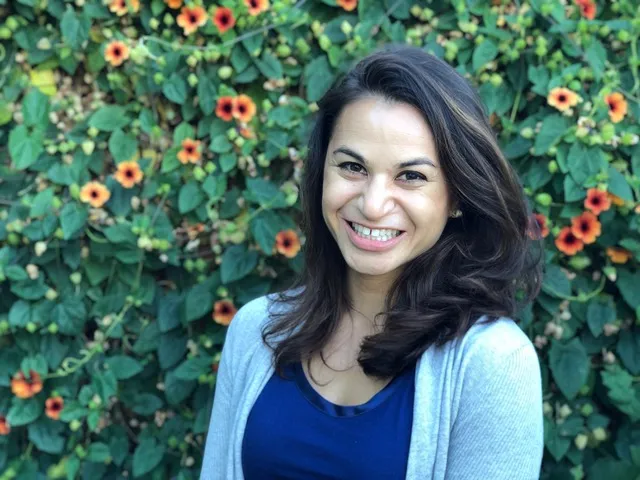
Stanford-led study finds link between teachers’ financial anxiety and job performance, including attendance and turnover
As the cost of living surges in a number of U.S. cities, what happens to schools when teachers’ salaries don’t keep pace?
A Stanford-led study finds that even in an area where teachers earn well above the national average, these professionals are feeling the squeeze—and their financial anxiety is linked to measures of job performance that may have significant consequences for the students they teach.
Using survey data from more than 2,000 teachers at San Francisco Unified School District (SFUSD), researchers found that the teachers experienced greater economic stress than U.S. workers more generally. What’s more, the teachers’ level of financial anxiety predicted behaviors such as attendance and their likelihood to leave the job.
“Financial anxiety has a real impact on teachers’ attitudes and behavior,” said Elise Dizon-Ross, a doctoral candidate at Stanford Graduate School of Education (GSE) and lead author of the study. “It’s not just a fuzzy feeling—it’s a real experience with serious implications for schools.”
Measuring anxiety
Through an ongoing partnership between SFUSD and the GSE, the researchers emailed surveys to nearly all of the district’s K-12 teachers to measure the prevalence and patterns of financial anxiety. Nearly 70 percent completed the survey.
The survey posed questions about how frequently the respondents’ financial situation makes them feel anxious, how easy or difficult it is for them to pay their rent or mortgage each month and how hard it would be to pay an unexpected expense of $1,000.
The survey also asked respondents about total household income, student loans, home ownership, child care costs and other factors to get a fuller picture of their financial situation. Some of the survey questions were adapted from an economic survey of Americans nationwide conducted the same year for Marketplace, a public radio news program.
The researchers found that the teachers were considerably more likely to experience economic anxiety than the national sample. Nearly half of SFUSD teachers (48 percent) reported being frequently anxious about their current financial situation, compared with only 17 percent of employed adults in the Marketplace survey.
The researchers also wondered if teachers’ financial anxiety varied based on different characteristics, such as age, race, gender, specialty area or years of experience. They found that most of these characteristics were unrelated to the amount of economic anxiety the teachers reported.

Elise Dizon-Ross
“I was a little surprised to find out how consistent it was,” Dizon-Ross said. “Basically, everyone across the board was feeling it.”
The one factor that did predict higher levels was age: Younger teachers were more likely to express economic anxiety across all of the measures, which the researchers suggest is probably due to earning lower salaries, being less likely to be part of a two-income household and being more likely to rent or otherwise face higher housing costs if they’re new to the city or labor market.
The researchers included a series of questions about teachers’ attitudes and behaviors, then matched the survey data with administrative records provided by the district. They found that economically anxious teachers tended to have more negative attitudes about their jobs, had worse attendance and were 50 percent more likely to depart the district within two years of taking the survey.
“Economically anxious teachers were more likely to leave their jobs at SFUSD, but they were also more likely to express interest in pursuing leadership roles at some point in the future,” said Dizon-Ross. “This suggests that they aren’t leaving their job because they no longer want to be an educator. They don’t want to exit the profession entirely.”
Possible support strategies
The study offers insight into strategies that could support teachers facing financial stress to make their career choice more sustainable. Beyond the obvious—raising salaries, which may not be politically feasible—the researchers suggested that districts and policymakers could take steps to develop subsidized housing for teachers closer to schools.
“Teachers in San Francisco are commuting a very long distance, which is untenable and causes them a lot of anxiety,” Dizon-Ross said. In San Francisco, the district has begun working with city officials to build a 100-unit affordable housing complex for district educators, currently slated to open in 2023.
The study also suggests alternatives to the support systems that some teachers lack, particularly those in single-income households. Housing stipends, low-cost loans or financial crisis grants—programs typically designed for low-income populations—could be appropriate in high-cost cities for middle-income professionals, like teachers, who need to be geographically dispersed.
While San Francisco is a striking example of a city where the cost of living is rising rapidly, the study points out that similar challenges face a number of other cities not typically considered among the most expensive, including Houston, Denver, Atlanta and Nashville.
“There are a lot of cities around the country where the cost of living is going up quickly, and the income of teachers and other middle-income professionals is not keeping pace with what people need to live comfortably in that city,” said Dizon-Ross. “This is going to matter increasingly for districts all around the country.”
Coauthors of the study are Susanna Loeb, director of the Annenberg Institute of School Reform at Brown University; Emily Penner, an assistant professor at the University of California at Irvine and former postdoctoral fellow at Stanford GSE; and Jane Rochmes, an assistant professor of sociology at Christopher Newport University and former postdoctoral fellow at Stanford GSE.
Funding was provided by the Silver Giving Foundation, the Stanford GSE Incentive Fund for Projects in San Francisco Unified School District, and grants from the Institute for Education Sciences and the National Science Foundation.



